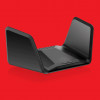Can Technology Open Spaceflight to Disabled Astronauts?

What would it be like to have a spaceship with a truly diverse crew—not the mix of alien species seen in so many sci-fi series, but human beings with all kinds of bodies? The European Space Agency announced in early February that it is recruiting a new pool of four full-time and 20 reserve astronauts for upcoming missions to the International Space Station, as well as future international missions to the moon. The agency promises the new astronaut class will be more gender-diverse than ever, and will seek qualified individuals with certain disabilities.
During a press conference two weeks ago, ESA officials told reporters the agency would open its upcoming application pool to include candidates who have a lower limb deficiency in one or both legs or feet, either congenitally or due to amputation; people who have differences in the lengths of their legs; or people who are less than 130 centimeters (4 feet, 3 inches) tall. This new height standard is considerably shorter than NASA’s existing requirement that astronauts must stand between 5 feet, 2 inches and 6 feet, 3 inches. All ESA astronaut candidates also need to have at least a master’s degree in a science, technology, or engineering field, or have training as a test pilot, and be younger than 50 years old.
ESA spokesperson Marco Trovatello says the application process, which opens March 31 and continues through May 28, is just the beginning for the so-called “parastronaut” program. The last time the agency had astronaut openings, they received more 8,000 applications. Trovatello says that agency officials consulted with both NASA and the International Paralympic Committee before making the announcement. “We have informed all our ISS partners regarding our intent,” Trovatello wrote in an email to WIRED. “But we have to run the feasibility study first.”









































































